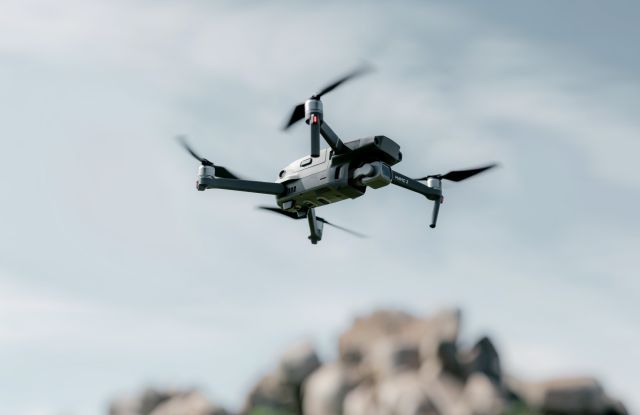
Flying Drones Are Becoming Increasingly Popular

Flying drones, also known as unmanned aerial vehicles (UAVs), have experienced a surge in popularity in recent years. Once limited to military and research applications, drones are now widely available for consumer and commercial use, offering a range of benefits and capabilities that have captured the imagination of enthusiasts and professionals alike. In this article, we’ll examine the reasons behind the increasing popularity of flying drones and discuss some of the most exciting applications and implications of this rapidly evolving technology.
Affordability and Accessibility: Drones for Everyone
One of the primary factors driving the popularity of flying drones is their increasing affordability and accessibility. Advances in technology and manufacturing have led to a significant reduction in the cost of drone components, making these devices more accessible to consumers and businesses. Today, there is a wide variety of drones available on the market, ranging from affordable entry-level models to high-end professional drones with advanced features.
Ease of Use: User-Friendly Controls
Modern drones are designed with user-friendly controls and intuitive interfaces, making it easier than ever for individuals to learn how to operate them. Many drones come equipped with GPS stabilization, obstacle avoidance systems, and automated flight modes, allowing even novice pilots to navigate with ease and capture stunning aerial footage.
Versatile Applications: More Than Just a Hobby
The growing popularity of flying drones can also be attributed to their diverse range of applications across various industries. Some of the most notable uses for drones include:
- Aerial photography and videography: Drones have revolutionized the field of photography and filmmaking, providing unique perspectives and enabling the capture of breathtaking aerial shots.
- Surveying and mapping: Drones equipped with high-resolution cameras and LIDAR sensors can quickly and accurately survey large areas, creating detailed maps and 3D models for industries such as construction, agriculture, and mining.
- Inspection and maintenance: Drones can safely and efficiently inspect hard-to-reach structures like bridges, wind turbines, and cell towers, reducing the need for manual inspections and minimizing risks to workers.
- Emergency response and search and rescue: Drones can be deployed in emergency situations to assess damage, locate survivors, and deliver essential supplies, improving response times and potentially saving lives.
- Environmental monitoring and conservation: Drones can monitor wildlife populations, track deforestation, and collect data on environmental conditions, aiding in conservation efforts and scientific research.
The Future of Flying Drones: Endless Possibilities
As drone technology continues to advance, we can expect to see even more innovative applications and use cases emerge. From drone deliveries and urban air mobility to advanced surveillance and communication systems, the potential impact of flying drones on our society is vast and far-reaching.
However, with the increasing popularity of drones comes the need for effective regulation and safety measures to ensure responsible usage and protect privacy rights. As governments and regulatory bodies work to establish guidelines and policies for drone operations, it will be crucial to strike a balance between fostering innovation and ensuring public safety.
In conclusion, the growing popularity of flying drones is a testament to their versatility, affordability, and ease of use. As technology continues to evolve and new applications emerge, it’s clear that drones have the potential to transform various industries and reshape the way we live and work.






























